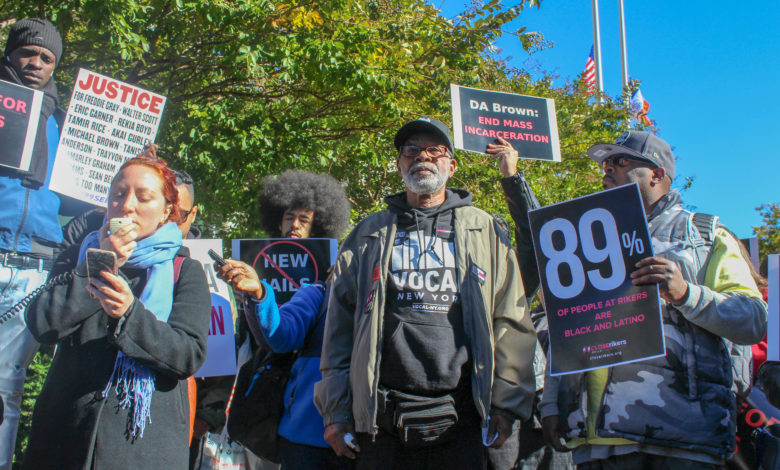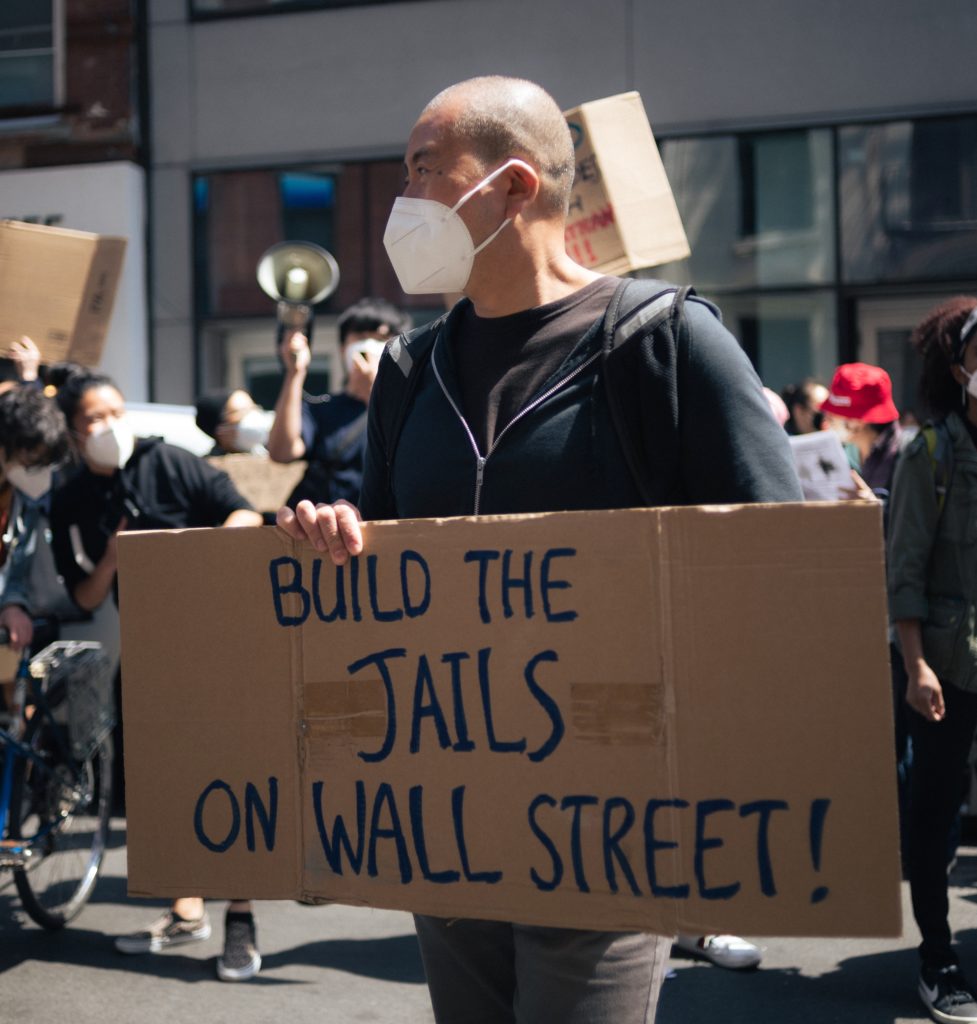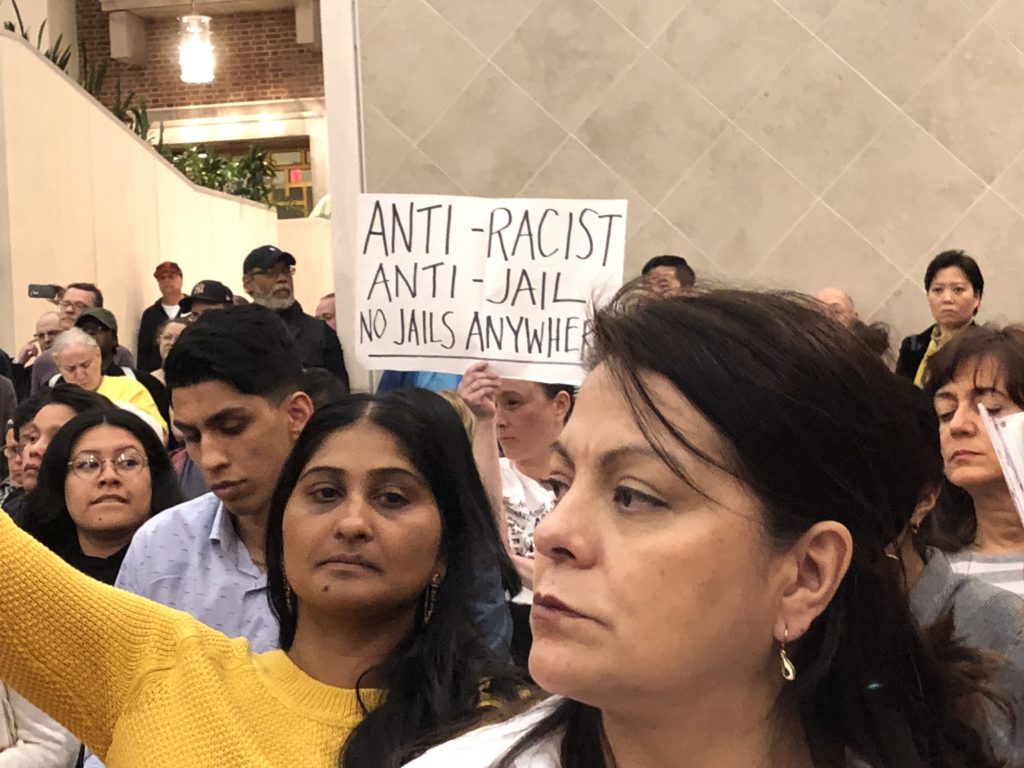
New York City’s Rikers Island jail complex has consistently made headlines throughout the COVID-19 pandemic for sustained violence, inhumane conditions, and overall deterioration: “The Violence at Rikers That’s Shrouded in Silence”; “A Look Inside Rikers: ‘Fight Night’ and Gang Rule, Captured on Video”; “‘Abject Neglect’: Critics Report Chaotic and Deadly Conditions on Rikers Island”; “Photos Inside Rikers Island Expose Hellish, Deadly Conditions.”
This influx of coverage is nothing new. Located in the richest city in the world and just five miles from Wall Street, Rikers has a notorious history as one of the country’s worst jails.
The jail began as, and has remained, a center of systemic neglect which denies inmates the most basic of needs, such as sanitary conditions, mental health care, and medical care. It is this deprivation of needs and deteriorating conditions that push those incarcerated toward the violence people associate with the prison.
Politicians’ calls for prison reform ring hollow, due to the nature of mass incarceration in the U.S. as a profitable business—an $182 billion a year industry. Nearly half of the money spent on prison facilities goes toward staff, which are represented by powerful lobbies who oppose reform. And jails like Rikers are a boon to prison profiteers such as the bail bond industry, the money transfer industry, private contractors, commissary vendors that sell goods to those incarcerated, and specialized phone companies, among many others.
Capitalists extract profit and get rich from those incarcerated, while little money is spent on providing basic needs and improving conditions. The deteriorating conditions at Rikers expose capitalism’s criminalization of poverty and its drive to maximize profit at the expense of poor and working people.
As Kerbie Joseph, an organizer against police brutality and mass incarceration, told Liberation News, “The capitalist class is waging a war against the poor and working class. The U.S. has over 2.4 million people behind bars, an increase of over 500% in the past 30 years. The American injustice system has 1,719 state prisons, 102 federal prisons, 901 juvenile correctional facilities, and 3,163 local jails as well as in military prisons, ICE facilities, civil commitment centers, and prisons in the U.S. territories.”
Criminalization of poverty
Rikers is on an over 400-acre island positioned in the East River between the Bronx and Queens that was, for decades, used as a landfill before being converted to a jail. The complex currently has eight open facilities in which incarcerated people are detained, some specific to women, young adults, need for medical attention, or the stage of their case. In addition to those eight facilities, there is a barge, referred to as “the Boat,” off of Hunts Point that is used as additional inmate housing.
Rikers currently houses close to 6,000 inmates, and 90% of those admitted are Black and brown, all working class or poor New Yorkers. Roughly 85% of the population—5,600 people— are being held in pre-trial detention, meaning that they are without a conviction or a sentence, awaiting their constitutional right to be tried in a courtroom. The overwhelming majority of those who have bail set cannot afford to pay, subjecting them to the severe conditions of the jail.
Rikers is a huge windfall to the bail bond industry, itself a lucrative business that profits off of the detention of poor Black and brown people. A 2017 report by the Brooklyn Community Bail Fund estimated that this industry in New York City alone raked in an estimated $14 to $20 million in 2016. In 2020, Court Watch NYC found that judges set bail exceeding $2,500 in 92% of the year’s cases and exceeding $10,000 in nearly half of cases. Black and brown men made up 87% of those with bail set that year, 45% with an amount set in the tens or hundreds of thousands. According to the Prison Policy Initiative, the average annual income of a man unable to afford bail is $16,000, and for a woman $11,000. 66% of women unable to make bail have children who are minors.
In comparison, bail was set for a total of five white people, none of which exceeded $10,000.
From 2019 to 2020, after bail reform was enacted, the median bail amount has risen from $15,000 to $25,000 for the same charges. Despite bail reform requiring that the courts use bail and pre-trial detention as a last resort after other less restrictive options, such as alternative-to-incarceration programs or parole, prosecutors and judges still chose to set bail for 70% of eligible cases. In essence, Rikers has become something of a debtor’s prison, detaining New Yorkers solely for being poor, highlighting the egregious criminalization of poverty.
Deteriorating conditions and lack of medical care for inmates
Massive problems, ranging from foundational construction violations to horrific living conditions, existed from the beginning and have gone unaddressed—in many cases, worsening, even and especially during the COVID-19 pandemic. People incarcerated throughout its facilities, particularly Otis Bantum Correctional Center, its intake unit, have reported severe overcrowding compared to a “slave ship,” as well as floors covered in trash, fecal matter, urine, and broken glass. People have been unable to access anything from toilets to medication. Incarcerated people went on a hunger strike at the beginning of 2022, citing the lack of their basic rights such as access to commissary, the law library, mail, and mental health and medical care.
Thousands of incarcerated people miss medical appointments every month. Many have shared stories of minor medical conditions that worsened due to denial of care. Officers often ignore requests for medical attention, fail to bring inmates to appointments, and, in the worst cases, lock them down when they have sustained a significant injury or illness, especially when resulting from a fight.
To request care, inmates can either ask a correctional officer—though they are often not present or responsive—or they can call a hotline, although phone access is often restricted. Despite continuous complaints to lawyers from inmates begging for care and reports proving that there have been no officers available for medical escorts, the Department of Corrections often reports missed appointments as inmate refusals.
Criminalization of mental illness
Mental health care is also strikingly sparse despite an increasing and critical need. As of 2022, 52% of inmates have been diagnosed with a mental illness. There are often more people on Rikers Island with mental illness than in all of New York City’s psychiatric hospitals. The city supposedly has a plan to implement the so-called Program to Accelerate Clinical Effectiveness that would provide individual and specialized housing units with more intensive care. However, this plan has yet to be realized, creating ongoing distress and greater unsafety throughout the jail.
Former New York City Mayor Bill de Blasio failed to follow through on his commitment to have 12 PACE units by 2020, and current Mayor Eric Adams has yet to provide any details on the continuation of this program as a response to rising need. Such negligence continues as the criminalization of houseless and mentally ill New Yorkers using the subway for shelter increases under the current administration, and community-based treatment remains underfunded, overwhelmed, and inadequate.
Despite numerous lawsuits, investigative reports, and media attention, the Department of Corrections has gone to great lengths to hide the reality of Rikers from the public, and the city has ignored decades of demands for change with pacified language and unactualized promises.
Conditions and neglect lead to violence
Rikers has had a notorious history of violence, particularly during the crack epidemic of the 1980s and 90s. In 2014, officers’ use of force in the jail rose to an all-time high. The violence against adolescents was also alarmingly common—a major reason for the implementation of the Raise the Age law in New York, which made the legal age for criminal responsibility 18, barring minors from detainment at Rikers.
At the start of 2022, videos from Rikers surfaced depicting “fight nights” happening among detainees in their housing units. During the de Blasio administration, in its attempt to curb rising violence, members of the same gangs were housed together. Effectively, this allowed houses to become run by that present gang. With this separation in place, violence is often used as a method of control, particularly with unaffiliated inmates or when rival gangs cross paths.
Correctional officers are often seen standing idly by and have been found to underreport the violence and injuries that result. Violent incidents have been long underreported at Rikers, contributing to the lack of public knowledge about the brutality and unsafe conditions plaguing the jail.
Solitary confinement as a means of punishment is also a common practice at Rikers. While the de Blasio administration declared support for limiting its use at the jail, the former mayor quietly signed an emergency executive order near the end of his term last year postponing the plan. Current mayor Adams has since publicly stated his support for the practice, thus maintaining its use the status quo at Rikers.
The combination of across-the-board unsafety, apathy, and lack of state response has culminated in the avoidable, untimely, and tragic deaths of 16 men in 2021 and six to date in 2022. Many have died of suicide, overdoses, untreated medical emergencies, or COVID-19. All deaths highlight a level of dysfunction and inhumanity that the state refuses to effectively address and underscores the need to permanently close Rikers.
Plans to close Rikers will not lead to decarceration
In the late 1970s, criminal justice reformer Herb Sturz put out a proposal to replace Rikers with smaller jails across the city, citing a dangerous environment past the point of repair. The proposal noted an increasing number of suicides, riots, staff protests, an unrealistic cost to upgrade the facilities effectively, and increased ease to manage multiple smaller facilities. The city shot down the proposal mainly due to cost, and Rikers remained as the city’s main jail, still without essential changes.
In a repetition of history, the city passed the Borough-Based Jail plan in 2017, which promised the closure of Rikers by “creating a network of four, more modern jail facilities in Manhattan, Brooklyn, Queens, and the Bronx.” The plan also includes reducing the overall jail population to 3,300. Borough-based facilities are intended to increase access to families, attorneys, courts, healthcare, and community resources. With the city’s cited COVID-19 delays, Rikers is now intended to close fully by August 2027, although Mayor Adams is still largely silent on the details of progress.
While there are many advocates of the Borough-Based Jail plan, opponents argue that jail is still a jail, regardless of where it is built. And based on the history of New York City jails, many do not feel confident in the city’s ability to make new ones any safer or equipped with better care. The city has also failed to produce a comprehensive plan for decarceration that would allow them to reduce and maintain a significantly lower population and improve recidivism rates.

Chinatown is where the plan intends to build one of the new jails. Liberation photo.
Rikers is a manifestation of capitalism
The system of mass incarceration can be depicted no better than at Rikers Island—it is a manifestation of capital’s drive toward maximizing profit that thrives and relies on racism, brutality, and the criminalization of poverty. Jails within capitalism operate as forces of social control. Politicians will always publicly declare empty rhetoric and unfulfilled promises because current and future administrations require the conditions of Rikers as a talking point to win elections—and they use the public image of dangerous criminals and gangs within Rikers to justify further funding of the New York Police Department, whose budget totaled $10.9 billion in 2022 alone.
Solutions to the crisis of Rikers must go beyond simple repairs and reform to building a socialist system that prioritizes poor and working people over profit. Capitalism leaves Black and brown youth poor and unemployed as a reserve army of labor in order for employers to keep wages low. They are then surveilled, harassed, and finally arrested by racist police, funneling them into the multi-billion dollar prison industry.
Poverty, unemployment, and its resulting criminalization are essential features of capitalism, so we cannot rely on the state to reduce rates of mass incarceration. Any victories against the system will be led by the people, as we saw recently with the successful campaign to pressure Queens District Attorney Melinda Katz to drop all charges against Prakash Churaman, and as we are currently seeing with the ongoing struggle to free Ronald Williams and Chanel Lewis—all of whom spent time incarcerated at Rikers.
To increase public safety, we need to build a society that guarantees the most basic of rights, from housing, to healthcare, education, and employment and directs resources toward violence interruption teams and more people-focused services. This is the only way forward to end mass incarceration.

Liberation Photo: Joyce Chediac





